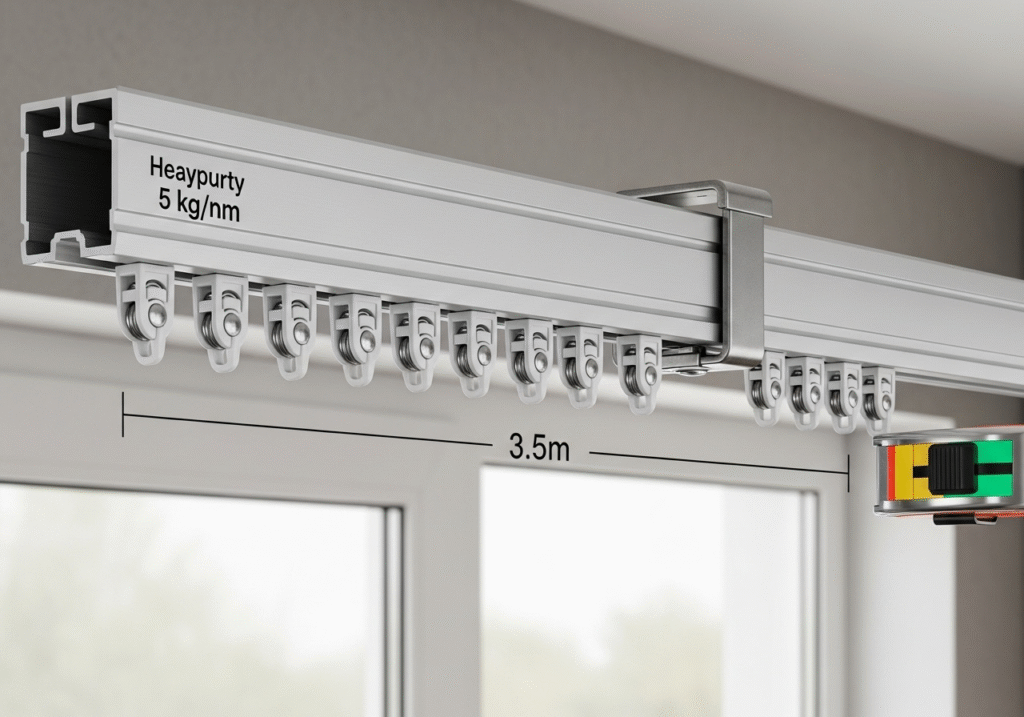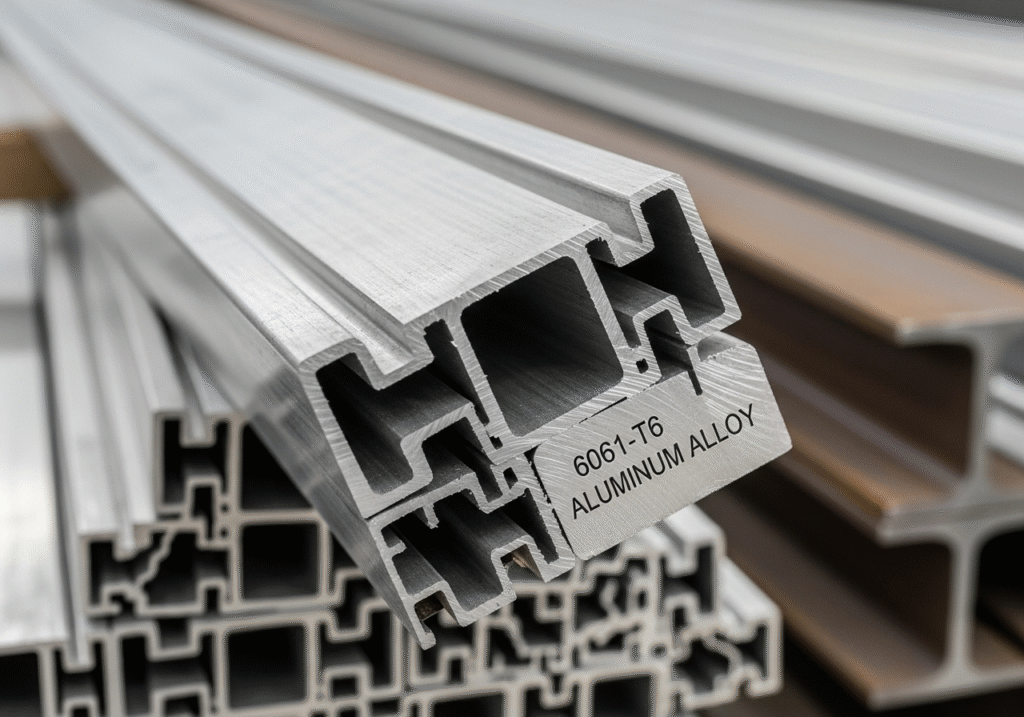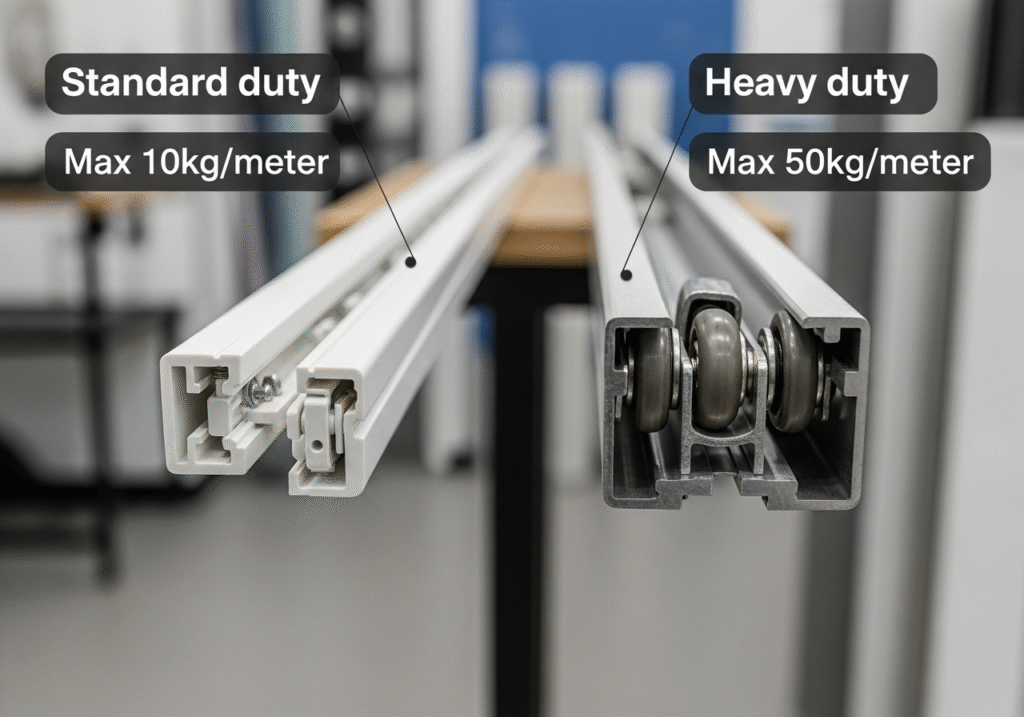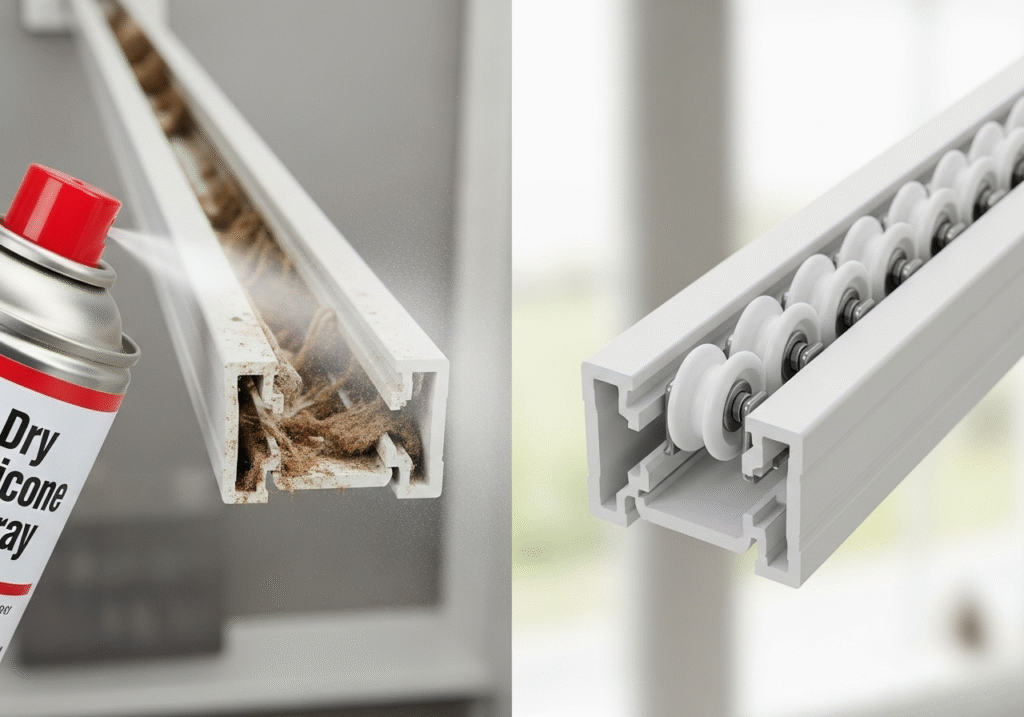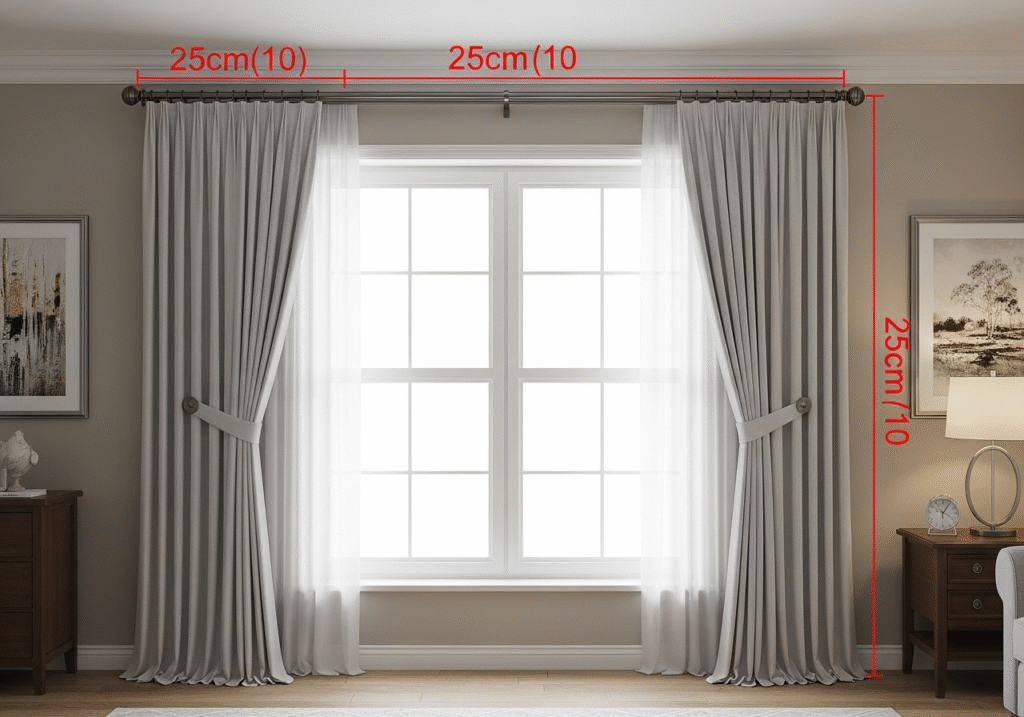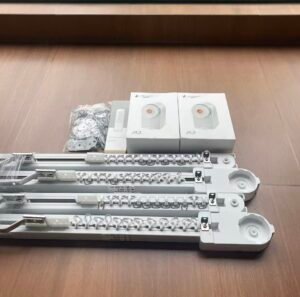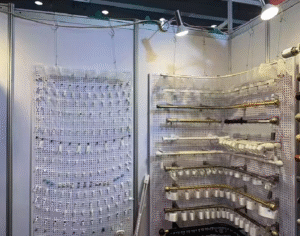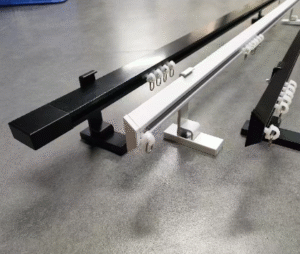Choosing the wrong curtain tracks can lead to sagging, jamming, and expensive replacements. Getting the specifications right from the start ensures a perfect, long-lasting installation that saves you hassle.
The most important specifications are the track's material, its weight capacity per meter, the type of gliders used for smooth operation, and the precise length to ensure full window coverage and functionality.
When I was just starting out on the factory floor, I learned fast that the specs on paper determine the performance in real life. I’ve seen many purchasing managers, even experienced ones like Matt, get frustrated with systems that fail. They often looked good at first, but they weren't built for the job. Focusing on technical details like material strength and weight capacity is the difference between a track that lasts two years and one that lasts twenty. Let's break down the specifications that truly matter.
What Is the Strongest Material for Curtain Rods, and What Are the Most Important Specifications to Consider?
Afraid your heavy curtains will bend an inferior rod? A weak material leads to sagging and failure. Choosing the right one guarantees strength and peace of mind for any installation.
Steel is technically the strongest material, perfect for extremely heavy loads. However, for most commercial and high-end residential uses, extruded aluminum provides the best balance of strength, light weight, and corrosion resistance.
The question of the "strongest" material is one I get all the time. While pure strength is important, it’s not the only factor. The best choice depends on the specific application.
Aluminum for Versatility
For 90% of a purchasing manager's needs, like in hotels, offices, or hospitals, extruded aluminum is the superior choice. The extrusion process lets us create complex internal profiles that are incredibly strong and rigid. Aluminum is also lightweight, which makes installation easier and puts less strain on walls. Plus, it's naturally rust-proof, so it won’t be affected by humidity or coastal air.
Steel for Extreme Loads
Steel is the undisputed champion for raw power. You need it for massive, ultra-heavy applications like main stage curtains in a theater. Its sheer density allows it to span great distances without support while holding hundreds of pounds. But, it is heavy and can rust if the coating gets damaged.
Here’s a simple guide:
| Material | Best Use Case | Pros | Cons |
|---|---|---|---|
| Aluminum | Most Commercial & Hospitality | Strong, lightweight, rust-proof | Less raw strength than steel |
| Steel | Theaters, Industrial Spaces | Maximum strength and span | Heavy, can rust if not coated |
| Plastic | Light Residential Sheers | Inexpensive, easy to cut | Weak, brittle, not durable |
How Much Weight Can Curtain Tracks Hold, and What Is the Most Important Specification to Consider?
Worried your new tracks will sag under luxurious, heavy curtains? Miscalculating weight capacity is a common error. Understanding this key specification prevents an embarrassing and costly installation failure.
Curtain tracks have specific weight capacities, usually rated in pounds or kilograms per meter. Always check the manufacturer's data, as a standard track might hold 10kg per meter while a heavy-duty one can hold 50kg or more.
Weight capacity is a non-negotiable specification. I tell my partners to never guess—always check the data sheet. The weight of curtains can be surprisingly high, especially with blackout linings, long drops, and wide spans. Overloading a track is the number one cause of sagging and system failure.
Calculating Your Curtain Weight
First, you need to know the weight of your fabric, which is measured in grams per square meter (GSM)1. Then, calculate the total square meters of fabric in your curtains. Don't forget to add the weight of the lining and the header tape. Once you have the total weight2, divide it by the length of the track in meters. This gives you the required weight capacity per meter.
Why Bracket Spacing Matters
A track's stated weight capacity is only accurate if you follow the recommended bracket spacing3. The farther apart the brackets are, the less weight the track can hold between them. A heavy-duty track4 might be rated for 40kg per meter, but that assumes a bracket is placed every 60-80cm. If you space them farther apart, the capacity drops significantly. Always install more brackets than you think you need, especially near the ends and at any bends.
How Do You Make a Curtain Track Smoother, and How Do Heavy-Duty Systems Stay Smooth?
A curtain track that sticks and jams is frustrating for everyone. It makes a room feel cheap and can damage curtains from forceful pulling. Smooth operation is essential for a high-quality feel.
For a quick fix, you can clean the track and apply a dry silicone spray. However, a truly smooth system relies on superior engineering, like roller gliders, which are designed for long-term, friction-free performance.
When I work with clients like Matt, we talk about building smooth operation right into the system from the start. While you can sometimes improve a cheap track, you can't fix a poor design. Genuine smoothness comes from the quality of the components.
The Role of Gliders
The single most important component for a smooth glide is the glider itself. Standard tracks use simple plastic hooks that slide inside the channel. This creates friction, especially with heavy curtains. Over time, dust and dirt build up, making the problem worse. The solution is to upgrade the gliders.
Roller Gliders and Ball-Bearing Carriers
For professional installations, we always recommend carriers with wheels.
- Roller Gliders: These have small wheels that roll along the bottom of the track channel. This simple change dramatically reduces friction, allowing even very heavy curtains to move with a gentle touch.
- Ball-Bearing Carriers: For the ultimate in smooth and silent operation, carriers with internal ball bearings are the best choice. They are an industry standard in high-end hotels and motorized systems because they can handle significant loads with almost zero effort. Investing in better gliders is the most effective way to guarantee a smooth-running track for years.
How Long Should a Curtain Track Be, and What Is the Most Important Specification to Consider?
Unsure how to properly measure for a curtain track? A track that is too short looks awkward and fails to block light. Getting the length right is crucial for both function and aesthetics.
A curtain track should extend 15-30cm (6-12 inches) beyond the window frame on each side. This allows the curtains to stack back neatly off the glass, maximizing daylight and creating a fuller appearance.
Proper track length is one of those details that separates a professional installation from an amateur one. It's about more than just covering the window; it's about framing it. Extending the track well beyond the window frame is a crucial specification for two main reasons.
Maximizing Light and View
When the track only spans the width of the window, the curtains block a portion of the glass even when they are fully open. This is called the "stack back." By extending the track, you create a space on the wall for the curtains to gather, or "stack." This leaves the entire window pane unobstructed, letting in the maximum amount of natural light and preserving the view. The heavier the curtain material, the more stack back space you need, so you should extend the track even further.
Creating a Grander Look
A wider track also creates a visual illusion5 that the window itself is larger and more impressive. It gives the window treatment6 a sense of purpose and scale, making the entire room feel more balanced and professionally designed. For a standard window, a 15cm extension on each side is a good starting point. For large windows or very heavy drapes, I recommend extending it 30cm or more.
Conclusion
Focusing on specifications like material, weight capacity, glider type, and length is key. It ensures you purchase a curtain track that performs flawlessly and provides exceptional long-term value.
Related:
-
Understanding GSM is crucial for selecting the right fabric weight for your curtains. ↩
-
Calculating total weight helps ensure your curtains are suitable for the track and won't sag. ↩
-
Understanding bracket spacing is crucial for ensuring safety and maximizing the weight capacity of tracks. ↩
-
Exploring heavy-duty tracks can provide insights into their advantages and applications in various settings. ↩
-
Understanding visual illusions can enhance your design skills, making spaces feel larger and more inviting. ↩
-
Explore innovative window treatment ideas to elevate your home decor and create a stunning visual impact. ↩
